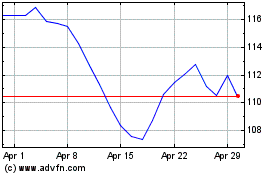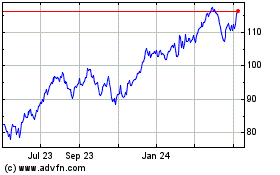New PGIM research highlights long-term investment
implications of three new types of companies emerging to dominate
today’s market.
New corporate models that are light on physical capital,
leverage technology and network effects to aggressively dominate
markets, and are dedicated to a broader social purpose are
reshaping the corporate landscape globally. These models will be
critical in determining winners and losers for years to come
according to new research by PGIM Inc., the $1.3 trillion global
investment management business of Prudential Financial, Inc. (NYSE:
PRU).
This press release features multimedia. View
the full release here:
https://www.businesswire.com/news/home/20191024005614/en/
Taimur Hyat, chief operating officer,
PGIM (Photo: Business Wire)
In “The Future Means Business: The investment implications of
transformative new corporate models,” PGIM argues that the
evolution of these “weightless,” “superstar” and “purposeful”
firms—driven by disruptive technologies, winner-takes-all markets,
and environmental and social concerns—requires new approaches to
asset allocation, valuation, risk models and investment
frameworks.
“Firms are now evolving more rapidly and radically than ever
before, with profound implications for their growth, profitability
and returns,” says Taimur Hyat, PGIM’s chief operating officer. “We
believe these new corporate models overlap, are often mutually
reinforcing and cannot be ignored by any company seeking to
innovate, grow, or avoid obsolescence risk. Even traditional ‘brick
and mortar’ firms with storied histories will need to consider how
they respond.”
The paper draws on insights from more than two dozen PGIM
investment professionals in fixed income, real estate, private
debt, quantitative equity, fundamental equity, and alternatives, as
well as a survey of over 300 public and private companies in the
U.S., Germany and China that reveals the changing nature of the
21st-century company. These changes matter immensely to long-term
investors, given over half of a typical institutional portfolio is
comprised of corporate holdings.1 Among the research findings:
“Weightless” companies are on the rise
Intangible assets are surging, even across traditional
capital-heavy industries. Almost 60% of firms in PGIM’s survey said
intangible assets had grown in importance over the last three
years—with more than 80% of Chinese firms believing intangible
assets would become even more critical over the next three
years.
Superstar “kill zones” are expanding
“Superstar” corporations have learned to leverage technology,
proprietary data and global networks to dominate markets. They
effectively create “kill zones” around their area of dominance,
buying out competitors and startups to shut down challenger
products or assimilate new capabilities. In 1975, 50% of the
earnings of U.S. public corporations came from 109 firms. Today,
the same percentage comes from just 30 companies.2
Purposeful firms are becoming agents of social change
Two out of every five companies surveyed globally by PGIM—and
well over half surveyed in Germany—said they now balance profit
maximization with the potentially broader goals of other
stakeholders, especially employees, customers and country. Today,
the global Fortune 500 spend three times as much annually on
corporate social responsibility as the combined development and
humanitarian aid spending by the United Nations Development
Programme (UNDP) and the United Nations Children’s Fund
(UNICEF).3
What these transformative business models mean for
investors:
- Re-evaluate public-private allocations. Weightless
companies are staying private for longer, driven by lower capital
requirements, a lower fixed-cost base, and easy access to the glut
of late-stage private capital.
- Adjust risk models to appropriately evaluate
intangible-driven firms. Mispricing of credit risk by ratings
agencies can potentially create opportunities in both public and
private debt markets for savvy investors.
- Develop an investment framework to identify next-generation
national superstars. With rising concentration, fewer new
entrants and expanding “kill zones,” successful investors will need
to identify potential superstars with strong staying power
relatively early on.
- Transition to next-generation ESG approaches.
Environment, Social and Governance metrics are not a “one size fits
all” proposition and no single ESG metric is material for all
companies and across industries.
“The transforming corporate landscape can have a powerful
impact—both positive and negative—on our world,” said David Hunt,
president and chief executive officer of PGIM. “For example, while
weightless firms have led to greater use of remote-work
arrangements and the emergence of flexible co-working spaces, their
labor-light approach has contributed to a hollowing out of
middle-income occupations in the U.S. Investors and other
stakeholders will need to be nimble enough to capture the benefits
of these new models while navigating the risks.”
For more, visit the microsite for “The Future Means Business:
The investment implications of transformative new corporate
models,” the latest in PGIM’s Megatrends series.
About PGIM and Prudential Financial,
Inc.
With 16 consecutive years of positive third-party institutional
net flows, PGIM, the global asset management business of Prudential
Financial, Inc. (NYSE: PRU), ranks among the top 10 largest asset
managers in the world4 with $1.3 trillion in assets under
management as of June 30, 2019. With offices in 15 countries,
PGIM’s businesses offer a range of investment solutions for retail
and institutional investors around the world across a broad range
of asset classes, including public fixed income, private fixed
income, fundamental equity, quantitative equity, real estate and
alternatives. For more information about PGIM, visit pgim.com.
Prudential’s additional businesses offer a variety of products
and services, including life insurance, annuities and
retirement-related services. For more information about Prudential,
please visit news.prudential.com.
Prudential Financial, Inc. of the United States is not
affiliated with Prudential plc, which is headquartered in the
United Kingdom.
1 Based on the portfolio allocation of a large U.S. pension
fund. Values were derived from the market value of the assets, as
of June 30, 2018.
2 Gross, Peter M.J., “Investing in a Winner-Take-All World,” CFA
Institute, Oct. 25, 2018.
3 “The KPMG Survey of Corporate Responsibility Reporting 2017,”
KPMG, 2017; “UNICEF Humanitarian Action Study 2017: A synthesis of
UNICEF’s response,” United Nations Children’s Fund, 2017; UNDP
Transparency Portal, 2017.
4 Pensions & Investments’ Top Money Managers list, May 27,
2019; based on Prudential Financial total worldwide institutional
assets under management as of Dec. 31, 2018. Assets under
management (AUM) are based on company estimates and are subject to
change.
View source
version on businesswire.com: https://www.businesswire.com/news/home/20191024005614/en/
MEDIA CONTACT: Julia O’Brien 973-367-7098
julia.obrien@pgim.com
Prudential Financial (NYSE:PRU)
Historical Stock Chart
From Mar 2024 to Apr 2024

Prudential Financial (NYSE:PRU)
Historical Stock Chart
From Apr 2023 to Apr 2024
